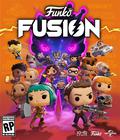Genre: Arcade Flight Sim
Developer: Asmik Ace, Ent.
Publisher: Sammy
Release Date: September 9, 2003
Buy 'LETHAL SKIES II': PlayStation 2
Most flight simulation fans who prefer the get-up-and-go readiness of a console so the slow, plodding pace of a PC have, for quite some time now, differed to Namco’s Ace Combat games as the pinnacle of flight combat perfection. But with Ace Combat now up to its fourth installment, subsequently looking a bit long in the tooth, fans of the genre have began to look elsewhere for their high-flying fix. Enter the Asmik Ace-developed Lethal Skies II for the PS2. The sequel to last year’s technically able yet critically bashed flight combat game. This time around nearly every aspect of the experience has been substantially improved upon and despite Namco’s best efforts Lethal Skies II may arise victorious in the flight combat simulation battle for supremacy.
Taking place shortly after the events of the first Lethal Skies, the sequel begins as two major military powers are heatedly duking it out for world domination. The year is 20XX and you are a frontline fighter who is highly skilled in piloting virtually any type of aircraft. The story unfolds mainly through detailed before-mission briefings and cut-scenes that are purported in a professional and to-the-point manner. While the depicted military powers in Lethal Skies II are far removed from your standard evil-dictator/just-and-noble factions and instead goes for a more realistic true-to-form style of storytelling, they aren’t representative of any actual nationalities.
Most of the aircraft you’ll be piloting will be from the ripped-from-reality variety. Such as fan favorites like the MiG29, F-16, and the A-10, though there will also be plenty of experimental, prototypical rides to try your hand at. In all, there are 19 types of aircraft to pilot in the game, sometimes switching drastically in handling and functionality. Of course, you won’t be granted access to every plane right from the outset. Instead you’ll slowly be given access to different aircraft as the story unfolds.
Lethal Skies II is technically a flight simulator, though that title does little to actually prepare you for the action-packed, arcade-style proceedings of the game. You don’t have to be a well-trained air force recruit to pick this game up and get down to business, but the more you do know about the ins and outs of military flight the better off you’ll be in terms of understanding the various nuances that the game effectively maintains.
Nevertheless, fans of arcade-style flight games will feel right at home here as most of the controls and aircraft functions are efficiently allocated to computer automation. Mostly, the only thing you’ll have to worry about is navigating terrain and getting the enemy to fall between your targeting reticule. The shoulder buttons are used to throttle, air brake, and control your rudders. The touch sensitivity of the dual shock’s shoulder buttons are used to great effect, resulting in varied acceleration, braking, and maneuvering depending on how hard you depress them. The face buttons are associated with the assortment of munitions your craft will have on hand. The L3 button (pushing in on the left analog stick) will set off a chaff, which is perfect for disorienting enemies who have locked on to you. Success is not completely reliant on you and your craft, however. You’ll also have wingmen on hand who you can easily give orders to, and for the most part they are quite necessary to staying alive.
Each mission in Lethal Skies II is entirely unique, and escort missions are kept to a merciful minimum. Flight sim fans can look forward to a wide spectrum of objectives ranging from run-of-the-mill dogfighting to more advanced combat situations such as air-to-ground battles, defensive-centric missions, and full-on enemy rampages. But regardless of the type of mission you take on, the fact remains that they are always satisfyingly challenging and, moreover, fun.
The single-player campaign is where you’ll find the most aerial bang for your buck, but the included multiplayer modes are also very well executed and plenty of fun if you’ve got another human close by. Traditional dogfighting is a fan favorite that is expectedly included here, but there are also multiplayer modes where players are expected to navigate deadly-dangerous canyon trenches and another mode that challenges players to shoot down as many enemies as possible. The split-screen method of these modes takes a little getting used to as half your screen real-estate is effectively rationed out to each player, but the included i.Link compatibility should theoretically rectify that problem. I’ve never personally utilized the i.Link feature of my PS2 and I’m assuming I’m not alone in that respect, so this feature may be purely conjecture at this point.
Visually, Lethal Skies II is a great looking game and far better looking than its predecessor. Of special note are the various aircraft, all of which are meticulously detailed and react in an eerily realistic manner. Every detail that you’d expect to find in real military airplanes are represented with aplomb here: tiny moving parts, vapor trails, body damage. There is no doubt that the assortment of aircraft in Lethal Skies II benefited from the most attention. The various environments that you’ll fly through, though, look pretty nice too. Some of the textures used on the terrain throughout the game could have looked a little sharper, but for the most part you’ll find the surrounding scenery to be proportional, believably rendered, and adequately varied. Plenty of weather effects can also be scoped during any given mission, such as rain, heat waves, and high speed wind. Frame rate is occasionally an issue, but never to the point of interfering with the pacing or gameplay.
The graphics in Lethal Skies II may be the main difference between it and the first game, but the audio presentation is also considerably improved. The sounds of your fuel-injected flight machine - both as it rips through wind and takes off - are realistically depicted and perfectly synced. There aren’t a lot of sound effects that can really be used to enhance the act of piloting aircraft, but Asmik still does a great job of using what sound effects are applicable to their greatest potential. Voice acting is good but not great, mainly serving its purpose in situations such as when enemies deliver quick quips in the heat of a battle or when your wingmen are confirming orders. The music seems a little off-kilter from time to time. The blues-style orchestrations that account for half of the aural arrangement fits the action nicely, but the heavy metal guitar riff stylings that take up the other half seem tragically out of place.
Overall, Lethal Skies II is an admirable sequel to a decent game. Fans of Ace Combat and its titular successors should certainly give this game a look as it isn’t exactly a blatant copy of Ace Combat but is equally entertaining. Flight combat fans will find a lot to like in Lethal Skies II but, more surprisingly, fans of fun games in general will also get quite a kick out of it.
Score: 8.1/10
More articles about Lethal Skies II











































